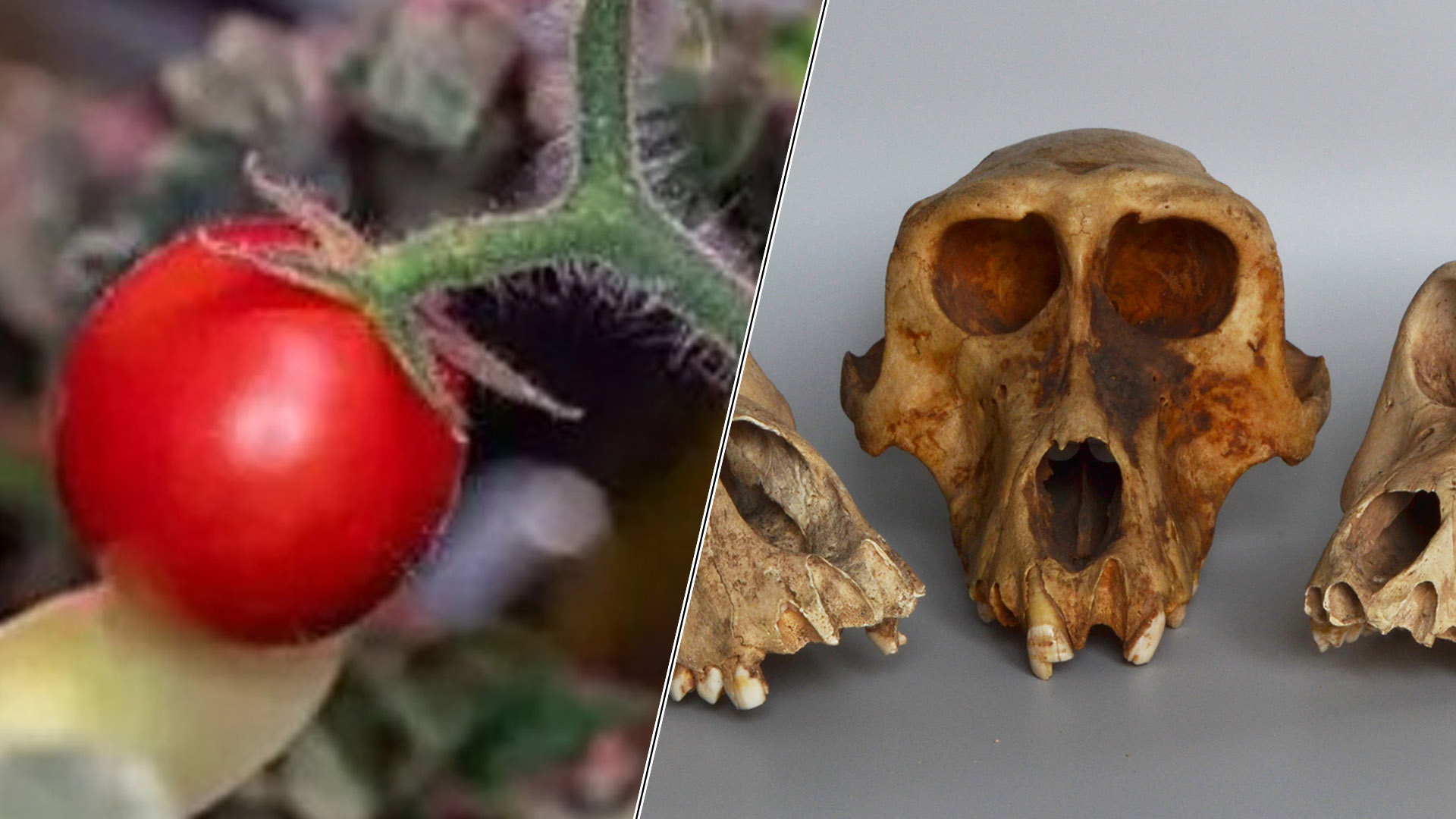
This week in science news, we rediscovered a missing tomato on the International Space Station (ISS), found a temple possibly dedicated to Alexander the Great and unpacked how traumatic memories are processed in the brain.
In the equivalent of finding a lost sock in the dryer, astronauts on board the International Space Station have located something that was lost eight months earlier: a dwarf tomato that had been grown on the spacecraft. The fruit was part of the final harvest from spacefaring tomato plants, and astronauts initially blamed fellow space explorer Frank Rubio for sneakily eating it. In reality, the desiccated tomato floated away in its Ziploc bag before Rubio could take a bite. And that's not the only thing that's pulling a disappearing act in the cosmos: The bright star Betelgeuse will "blink out" on Dec. 11-12. Here's how you can watch Betelgeuse disappear.
Back on Earth, archaeologists at the ghost of an ancient megacity discovered something else that had been lost: a 4,000-year-old Sumerian temple, with another temple from the Hellenistic period built right on top of it. Based on an enigmatic coin and tablet found at the site, archaeologists suspect the latter temple may have been dedicated to Alexander the Great.
This week, we learned about yet more things hidden underground, including this fossil pool of groundwater buried deep beneath the Sicilian mountains. Experts say it's 6 million years old. Archaeologists also unearthed a Byzantine gold coin with the "face of Jesus" on it, the earliest known framed saddle in the Central Asian "cave of the equestrian," and a "sensational" cache of Bronze Age axes in a Polish forest. In sadder news, "sacred baboons" that were mummified in ancient Egypt led bleak lives, being held captive in the dark and suffering from vitamin deficiencies as a result, archaeologists reported this week.
And remember that tablet said to contain the earliest Hebrew name of God? Turns out, it's probably just a fishing weight, and the so-called inscriptions are natural wear and tear.
Doctors took a deep dive into the mysteries of the brain this week, finding that traumatic memories are processed differently than ordinary ones and debunking the myth that newborns aren't born with "underdeveloped" brains, at least not compared with our primate cousins. They also zapped brains to help heal traumatic injuries, found that inflammation may drive mood changes in Alzheimer's disease, and showed that the key ingredient in psychedelic mushrooms could ease depression in those with bipolar disorder.
Back to the future, bioengineers have created nerve-cell-based "biobots" that could heal damaged skin and designed powerful "Star Wars"-like laser weapons that could melt distant targets. Thankfully, we're unlikely to see a Death Star anytime soon.
Speaking of amazing objects, scientists finally discovered how elephants got their amazing trunks. These incredible organs, which contain 40,000 individual muscles and nerve fibers, can both lift over 600 pounds (270 kilograms) and carefully pick up a single peanut. It turns out, these traits may have evolved millions of years ago in elephant-like ancestors to slash the soft, long grasses that grew in their habitat.
Follow LiveScience on social media
Want more science news? Follow our Live Science WhatsApp Channel for the latest discoveries as they happen. It's the best way to get our expert reporting on the go, but if you don't use WhatsApp we're also on Facebook, X (formerly Twitter), Flipboard, Instagram, TikTok and LinkedIn.
Picture of the week

A gaping hole opened up in the sun this week. The massive canyon is wider than 60 Earths and, since Dec. 4, has been spewing unusually fast radiation, known as solar wind, straight at Earth. Such dark patches emerge when the magnetic fields that keep the sun contained suddenly open up — but unlike sunspots, these holes are invisible, except in ultraviolet light. The massive hole is unprecedented to see at this point in the solar cycle, scientists say. Intriguingly, this massive hole is not tied to the explosive peak of the sun's 11-year cycle, known as the solar maximum. Most often, these coronal holes gape during the solar minimum.
However, there was news on other sky phenomena tied to increases in solar activity — such as this 1977 solar storm that shows how dramatically magnetic fields can vary during such magnetic disturbances.
Sunday reading
- In bleak but unsurprising news, experts are almost certain that 2023 will be the warmest year in recorded history.
- More climate-related news: Siberian bears are unable to hibernate and are instead walking around like zombies because it's too hot for them.
- Speaking of heat: What happens in your body during fevers?
- It's a plant. No, actually, it's a turtle — and a 120 million-year-old one, to boot.
- In other old-turtle news, the world's most ancient one, a Seychelles giant tortoise named Jonathan, just turned 191. Happy birthday, you randy old fellow!
- Scientists studying the deep sea have found that an underwater volcano riding a sinking tectonic plate may have unleashed the ultrapowerful quakes that have rattled Japan in recent years.
- And what is a supervolcano? The answer isn't straightforward.
- Archaeologists have historically neglected to research Africa beyond ancient Egypt. That's a shame, as Africa has been home to some amazing kingdoms, some of which date back to ancient times.
- This week, doctors tested a "superbug" vaccine — in mice. It's always in mice.
- Ever wondered how many times Earth has orbited the sun? Wonder no more.
- One other spacey question to ponder: What does space smell like? The overall consensus is something between hot metal and burnt meat.
- The year's only multicolored meteors are streaking across the sky next week. Here's how to watch the Geminids.
Live Science long read

Inflammation is one of the body's superpowers, a first line of defense that helps us fight infections and heal wounds. Without it, we'd all swiftly die. Yet because of a mismatch between our evolutionary past and our modern lifestyle, inflammation has become chronic, fueling diseases such as rheumatoid arthritis, cirrhosis, heart disease and cancer.
Historically, scientists tried to silence all inflammation with heavy-hitting drugs, but those medications can have nasty side effects.
Now, scientists are trying a subtler approach. By reprogramming the cells involved in misdirected inflammation, they are hoping to tune the inflammatory response — maximizing the good side of this essential immune response while muting its dark side.







